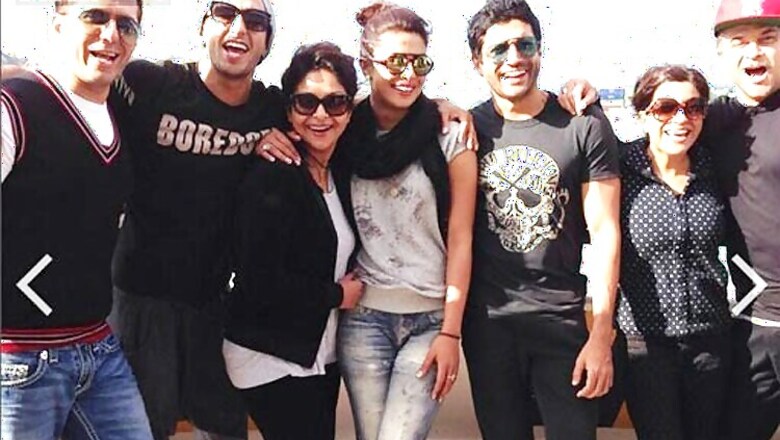
views
Exposing the hidden cracks in an otherwise joyful ‘Elite Class’ of the society, ‘Dil Dhadakne Do’ (DDD), the latest film from Zoya Akhtar, takes you on to a long, feel-good cruise party organised by a wealthy dysfunctional family with a hidden agenda. The film tries to explore the shallow emotional aspect of all affluent people in its script with a pinch of realism and humour. But at the same time it also reminds us about two lesser known instances from the past with some interesting similarities.
The blunt execution by Zoya firstly makes us remember the art-house classic from director Govind Nihalani, released in 1984, aptly titled ‘Party’. Though the film exploited the subject in much insightful manner, featuring many reputed names, it still had many identical elements in its ahead-of-time concept revealing the social-hypocrisy practiced widely.
For instance, Party begins with the elderly couples having conflicting conversations about society and life, their middle-age crises, their grown-up children facing their own problems in marriage, love and career. And as the actual party begins, we get to meet several other characters such as a struggling artist reciting revolutionary verses, a social worker confronting others with some provoking remarks, another rich lady looking for a suitable match for her young son and few others expressing their deep concerns for the underprivileged just for the sake of it. Later a middle-aged lady pukes due to overdrinking and some new loving relationships are formed with a couple getting caught kissing in the woods too. But above all, here also we have a young girl who loudly confronts her mother with disrespect calling her a parasite, accusing her of having a boyfriend encashing her husband’s name without any guilt as such.
No doubt, Nihalani’s ‘Party’ is a much more hard-hitting artistic film exploring human mind and emotions with a vision of enlightening the viewers, quite different from Zoya’s big budget entertainer ending on a bizarre note. Yet the basic theme remains the same, talking about the double standards practiced by this particular section of the society, though tackled distinctively.
Coming to the second instance in DDD related to the ‘speaking dog’ Pluto narrating the entire film from his own viewpoint, the sub-plot actually reminds us of an unfinished project titled ‘Reporter’ (1960) featuring Raj Kapoor in the lead, also having a talking dog with him as his only companion. However, the difference remains that in ‘Reporter’ the dog literally talked with a rare gift of predicting future events, while in DDD, Pluto only chats within in his mind commenting upon the people around as a monologue.
Luckily, few scenes from the film showcasing the conversation between Raj Kapoor and the dog (in female voice) can still be seen in an available unusual project titled ‘Film Hi Film’ (1983) directed by Hiren Nag, which was interestingly conceived by using such unused footage and songs of many shelved films, edited together with a specific storyline of a stressed producer.
So the talking dog was there in our films since 1960 but couldn’t make it to the screen unfortunately.

















Comments
0 comment